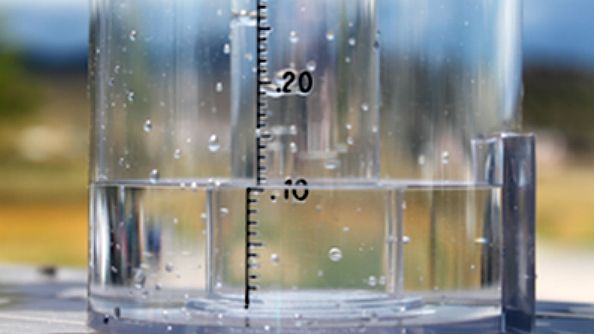TAMPA, Fla. — Have you ever seen a rainfall report on one of our Weather On The Nines segments and thought you got a lot more or a lot less rain than what was reported?
In July, parts of Tampa Bay had more than a foot of rain while other areas had less than 5 inches of rain. You can read the report here.
You can help improve rainfall accuracy by becoming an observer with the Community Collaborative Rain, Hail and Snow Network, or CoCoRaHS, program. It's a network of volunteers in Florida and across the U.S. who provide rainfall, snowfall and hail observations from their community.
Its mission is to do a better job mapping and reporting precipitation, which is important during intense rainfall events.
In Florida, the data are valuable during tropical events and our daily afternoon thunderstorms in the summer, because it fills the gaps between official observation sites.
This program was valuable for the state of Florida in 2017 while reporting rainfall amounts from Hurricane Irma, which ranged from 3 to 12 inches in the Tampa Bay region.
We reached out to the local National Weather Service office. NWS Meteorologist Andrew McKaughan says in the Tampa Bay area, Hillsborough County has the most official observers than any other county in the Tampa Bay region.
Here’s the breakdown of official CoCoRaHS observers in the Tampa Bay region:
- Hillsborough - 138
- Pinellas - 85
- Polk - 65
- Pasco - 63
- Sarasota - 61
- Highlands - 34
- Hernando - 31
- Manatee - 28
- Citrus - 27
- Hardee - 7
- Desoto - 2
He said that not all of the observers report daily, but it's valuable information that forecasters rely on.
For example, McKaughan says a few years ago, his office received "numerous real-time CoCoRaHS reports of 7+ inches of rain across Temple Terrace, which led to the issuance of a flash flood warning from our office. Most of Hillsborough County that day saw about 1-2, but a very localized area got much more."
At Spectrum Bay News 9, we check the CoCoRaHS reports to help us give you the most complete rainfall reports in Tampa Bay, because we know that how much rain you received one day could be very different from a nearby neighborhood.
So how does this work -- and how can you be a part of it?
You don't need a lot of training, but you will need an official 4-inch plastic rain gauge, and you will need to take a short training module online.
After that, all you have to do is take a precipitation measurement from your own backyard and submit the report to the CoCoRaHS website.
To submit an application and purchase a $35 rain gauge, go to www.cocorahs.org. You can also check rainfall reports on Spectrum Bay News 9.



